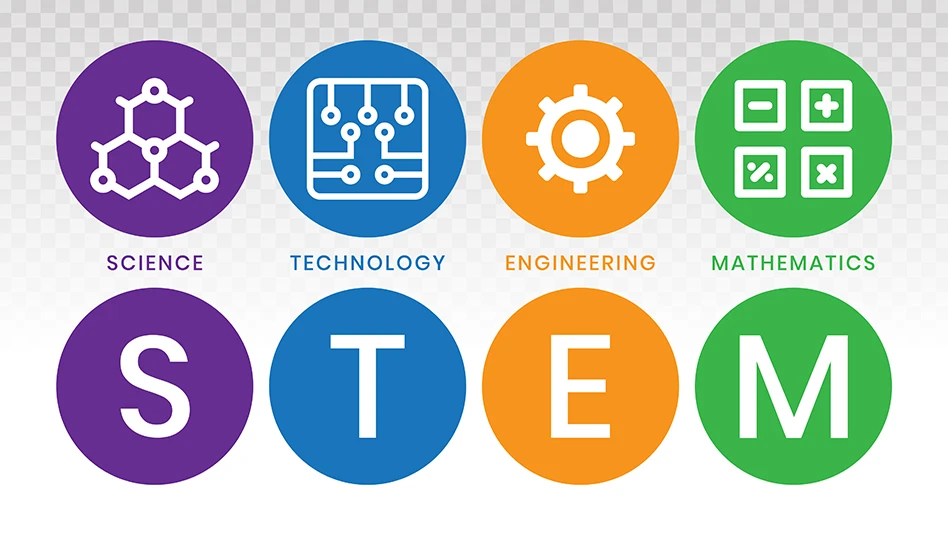
CREDIT: AdobeStock_330159208
Manufacturing Day (MFG Day), held on the first Friday of October every year, is a great opportunity for manufacturers to address workforce challenges. MFG Day is an initiative of the Manufacturing Institute, the workforce development and education affiliate of the National Association of Manufacturers. Thousands of manufacturers open their doors to students, parents, educators, and community leaders to demonstrate the reality and future of modern manufacturing careers as part of this annual event.
By participating in MFG Day, manufacturers take a proactive approach to address workforce needs and help ensure a sustainable future for their businesses. MFG Day provides an opportunity to:
- Dispel misconceptions and outdated or inaccurate perceptions of manufacturing jobs by showcasing the modern, high-tech nature of the industry.
- Inspire future talent by highlighting the diverse range of roles available, the potential for growth, and the positive impact manufacturing has on communities.
- Build relationships with schools, community organizations, and other stakeholders that can lead to partnerships in workforce development, education, and apprenticeship programs.
- Showcase career paths and highlight industry benefits such as competitive wages and opportunities for continuous learning and advancement in a stable, fulfilling environment.
Perhaps the most essential aspect of a successful Manufacturing Day is connecting with America’s youth and young at heart. Below are some suggestions for how manufacturers can engage with people in a way that excites them about possible careers in manufacturing. Here’s a hint: Channel your inner kid and think about the hobbies that people love!
By trying to understand the hobbies people, especially young people, are most interested in, manufacturers can produce more successful Manufacturing Day events. Let’s take a closer look at some potential messaging for three hobbies that might resonate with your MFG Day audiences.
LEGOs: The king of all deep-rooted manufacturing connections
National Institute of Standards and Technology (NIST) Manufacturing Extension Partnership (MEP) Acting Director G. Nagesh Rao has written about how he embraces his inner “tech LEGO nerd” with his massive LEGO collection. He is not alone. LEGOs are among the most popular toys in history with a fanbase of millions of people of all ages from around the planet. Even if you don’t play with LEGOs now, there’s a good chance you did at one point in your life.
Educators have often used LEGOs to teach science, technology, engineering, and math (STEM) concepts. Take a cue from them and talk about how LEGOs serve as a model of manufacturing excellence, inspiring innovation, precision, and customer engagement. Key topics could include:
- Precision engineering: LEGOs are renowned for their precision and consistency. The interlocking bricks must fit together perfectly, requiring advanced manufacturing techniques and quality control measures.
- Innovation and creativity: LEGOs encourage creativity and problem-solving, qualities that are essential for manufacturers to stay competitive.
- Customer engagement and brand loyalty: The LEGO Group has meticulously cultivated a dedicated community of consumers. Manufacturers can apply similar strategies to build their own brand loyalty.
Gaming: Manufacturing is akin to building a real-life game
When interacting with your MFG Day audience, you might ask people for a show of hands of those who love video games. This can include everything from simply playing them to having an interest in game development. You can relate how manufacturing is like building a real-life game, where you design, code, and test products that people use every day.
While gaming and manufacturing may seem like they are worlds apart, there are several intriguing connections between these two industries:
- Coding: Staff members can explain how coding for a cobot is similar to game development, emphasizing problem-solving and logical thinking.
- Digital prototyping and 3D printing: Both gaming and manufacturing rely heavily on digital prototyping to test and refine designs. Games often use 3D models to visualize and iterate on game environments and characters. In manufacturing, 3D printing allows for rapid prototyping of physical components.
- Quality control and testing: Both industries value quality control and testing. Games undergo extensive testing to identify and fix bugs before release, and manufacturers must ensure that their products meet quality standards and comply with regulations.
- Innovation and creativity: Both are driven by innovation and creativity. Game developers constantly push the boundaries of technology and storytelling. Manufacturers must innovate to stay competitive and meet evolving consumer demands.
Cosplay: Craftsmanship parallels product design
Much like gaming, cosplay combines technology and creativity. When creating costumes and props that look like those used by your favorite television or video game characters, you are taking a concept through a design process. You must account for production methods, materials, sizes, end uses, maintenance, and durability. Cosplayers naturally migrate to computer code and programming. Why not manufacturing?
For cosplayers, bringing characters to life parallels the product development process.
Much like crafting the perfect cosplay materials, manufacturing is about turning ideas into reality.
Engage people by being relatable
To effectively engage students and others, try to see the world from their perspective and connect manufacturing to their passions and hobbies. Plenty of creative hobbies translate to manufacturing careers. Tailor messaging to their interests and show how manufacturing requires both creativity and technical skills.
When thinking about messaging and the type of presentation or demonstration to offer, here are some key points to keep in mind.
- Whatever you demonstrate, in real life or virtually, emphasize creativity and problem-solving. Highlight the role of design and development in creating new products.
- Demonstrate hands-on learning. Offer interactive experiences such as building simple prototypes. Think of how cool it would be to demonstrate how to program a cobot.
- Use relatable language and speak in a way that your audience can easily comprehend. Avoid jargon and unnecessarily technical language and clearly explain the terms that they will encounter in the facility. That way, people will be better prepared to understand what they’re going to see or do on the tour.
Once the messaging is determined, these resources from the Manufacturing Institute can help make your MFG Day event even more successful.
Contact your local MEP Center for help with Manufacturing Day
Manufacturing Day offers you a chance to connect with people and share how your company contributes to the community and local economy. It also offers you a chance to address future workforce needs by connecting students’ passions to the exciting career opportunities available and inspiring the next generation of innovators and problem-solvers. Contact your local MEP Center to learn more about how you can leverage Manufacturing Day for your company. Source: https://www.nist.gov/blogs/manufacturing-innovation-blog/manufacturing-day-engaging-youth-and-young-heart
Latest from Today's Medical Developments
- Birk Manufacturing achieves ISO 13485 recertification
- SW North America's BA 322i twin-spindle CNC
- The role of robotics in precision medical device manufacturing
- Swiss Steel Group’s UGIMA-X machinable stainless-steel sets
- #51 - Manufacturing Matters - The Impact of M&A in MedTech 2024
- Visual Components: 25 years of simulation and programming software innovation
- Zimmer Biomet announces definitive agreement to Acquire Paragon 28
- Discover an innovative technology for EMI/ESD/TVS suppression





